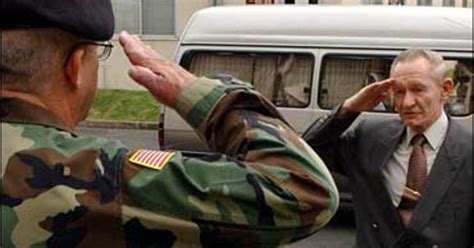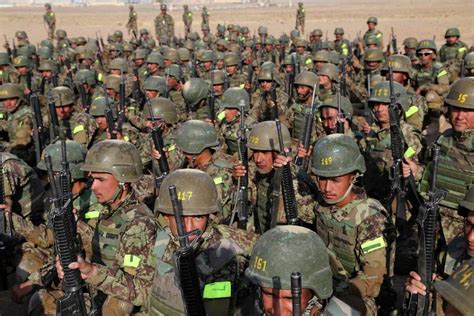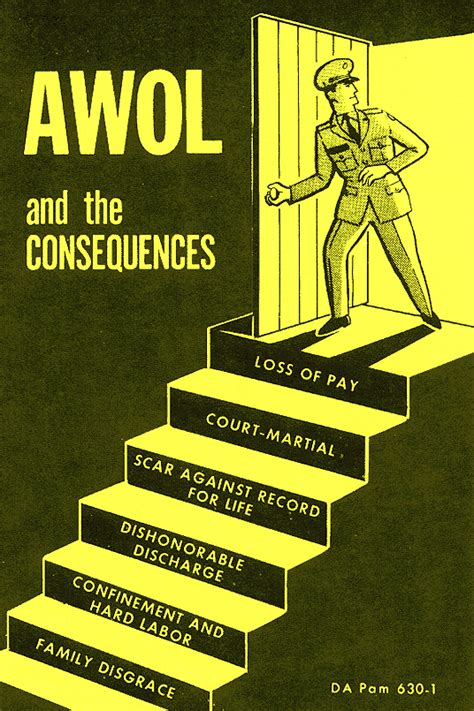Army Regulation Awol : What it is
Army Regulation AWOL: What It Is and How It Affects Military Personnel Introduction The United States Army is guided by a set of regulations and policies that govern the conduct and behaviors of its soldiers. One prominent regulation that soldiers must be aware of is Army Regulation 635-200, also known as the Army Military AWOL regulation. AWOL, which stands for Absent Without Leave, refers to the unauthorized absence of a soldier from their assigned duties or unit. In this article, we will delve into the details of the regulation, its implications, and frequently asked questions related to AWOL. What is Army Regulation 635-200? Army Regulation 635-200 provides guidelines and procedures for enforcing discipline and managing the military personnel of the United States Army. The regulation specifically addresses the issue of AWOL and outlines the consequences soldiers may face if they are found guilty of being absent without authorization. AWOL Offenses and Consequences As per Army Regulation 635-200, AWOL offenses can range from temporary absences without proper authorization to long-term desertions. The severity of the offense determines the consequences a soldier may face. Let's explore some common AWOL offenses and their associated consequences: 1. Unauthorized Absence: - Description: Unauthorized absence refers to situations in which a soldier fails to report for duty at the assigned time and place without proper authorization. - Consequences: Depending on the circumstances, soldiers found guilty of unauthorized absence may face disciplinary actions ranging from reprimand to reduction in rank, forfeiture of pay, extra duty, and, in some cases, court-martial. 2. Desertion: - Description: Desertion occurs when a soldier absents themselves from their assigned unit with the intent to abandon their duties permanently. - Consequences: Desertion is considered a serious offense. It can lead to significant penalties, including dishonorable discharge, imprisonment, and the loss of military benefits and privileges. 3. AWOL During Deployment: - Description: AWOL during deployment refers to soldiers who go missing or fail to return to their designated unit while being deployed on operations. - Consequences: Going AWOL during deployment raises concerns about readiness and poses significant risks to the mission and the fellow soldiers. Consequently, the consequences can be severe, including both military and legal charges. Understanding AWOL through Real-Life Examples To better understand the implications of AWOL, let's take a look at some real-life incidents involving soldiers from the United States Army: 1. Case Study: Private John Doe's Unauthorized Absence - Private John Doe was supposed to report for duty after a weekend leave, but failed to show up. He was absent for three days without proper authorization. - Consequences: Private John Doe was given a General Officer Memorandum of Reprimand (GOMOR), which is a written official censure, and faced a reduction in rank along with loss of pay for the days he was absent. 2. Case Study: Sergeant Jane Smith's Desertion - After expressing frustration with her unit, Sergeant Jane Smith went AWOL, leaving her base without authorization and did not return for several months. - Consequences: Sergeant Jane Smith was charged with desertion and faced dishonorable discharge, loss of benefits, and possible imprisonment. Impact of AWOL on Unit Cohesion and Readiness The consequences of AWOL are not only borne by the individual soldier but also have a significant impact on their unit and the military's overall readiness. Here are some ways in which AWOL can affect unit cohesion and readiness: 1. Disrupting Mission Continuity: - When a soldier goes AWOL, their absence disrupts the unit's operations and can hinder the accomplishment of critical mission objectives. The unit may have to reassign responsibilities and allocate resources to compensate for the missing soldier, thereby impacting overall efficiency. 2. Strained Unit Morale: - The absence of a soldier due to AWOL can result in a negative impact on unit morale. Other soldiers may have to take on additional responsibilities, potentially leading to increased stress and reduced motivation among the remaining members. 3. Legal and Administrative Burden: - Dealing with soldiers who go AWOL requires significant administrative effort and legal proceedings. This diverts resources and time that could have been otherwise utilized for training and operational preparedness. Frequently Asked Questions about AWOL 1. How can a soldier avoid going AWOL? - Soldiers can avoid going AWOL by ensuring they have proper authorization whenever they need to be absent from their assigned duties. Maintaining open communication with superiors and following the established chain of command is crucial. 2. Can a soldier voluntarily turn themselves in after going AWOL? - While voluntarily turning oneself in does not mitigate the offense, it may reflect positively on the soldier's willingness to accept responsibility. However, the consequences for AWOL will still be imposed. 3. What support is available for soldiers struggling with emotional or personal issues? - The U.S. Army provides various support programs, including mental health services and counseling, to assist soldiers dealing with emotional or personal challenges. It is crucial for soldiers to seek help early if they are facing difficulties that may impact their duty. In conclusion, Army Regulation 635-200, also known as the Army Military AWOL regulation, plays a vital role in maintaining discipline and accountability within the United States Army. AWOL offenses can have severe consequences for the soldiers involved, impacting their military careers and overall readiness. By understanding the regulations and adhering to the established procedures, soldiers can avoid the pitfalls of AWOL and contribute to a strong and effective military force. (Note: The content provided above is for informational purposes only and should not be considered official legal advice. To obtain accurate and up-to-date information on Army regulations, always consult official sources.)  Image Source : www.cbsnews.com
Image Source : www.cbsnews.com  Image Source : www.amazon.com.br
Image Source : www.amazon.com.br  Image Source : civildefence.info
Image Source : civildefence.info  Image Source : www.mysanantonio.com
Image Source : www.mysanantonio.com  Image Source : www.rsteviemoore.com
Image Source : www.rsteviemoore.com  Image Source : armymilitary.net
Image Source : armymilitary.net  Image Source : armymilitary.net
Image Source : armymilitary.net  Image Source : armymilitary.net
Image Source : armymilitary.net
39-Year AWOL Army Sgt. Surrenders - CBS News
awol army
Essential Guide To Military Desertion And AWOL: Overview, Review Of
desertion awol absence regulation instruction commanders dod unauthorized
Incredible Army Regulation 670-1 2022
Afghan Troops Going AWOL From JBSA
awol afghan army troops jbsa soldiers going
R. Stevie Moore A.w.o.l.
awol gone military go soldiers christian decide ua someone did know stevie moore unfair notice please use
Awol Army Regulation - Army Military
Army Awol Regulation - Army Military
Army Regulation 635-200 - Army Military
Army awol regulation. Essential guide to military desertion and awol: overview, review of. R. stevie moore a.w.o.l.. Afghan troops going awol from jbsa. Incredible army regulation 670-1 2022